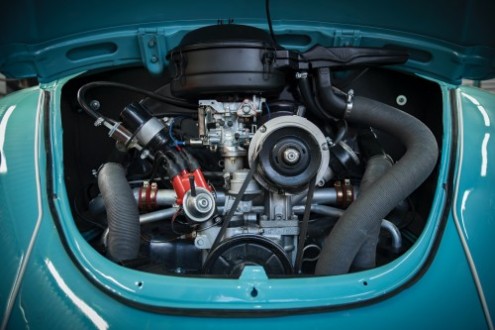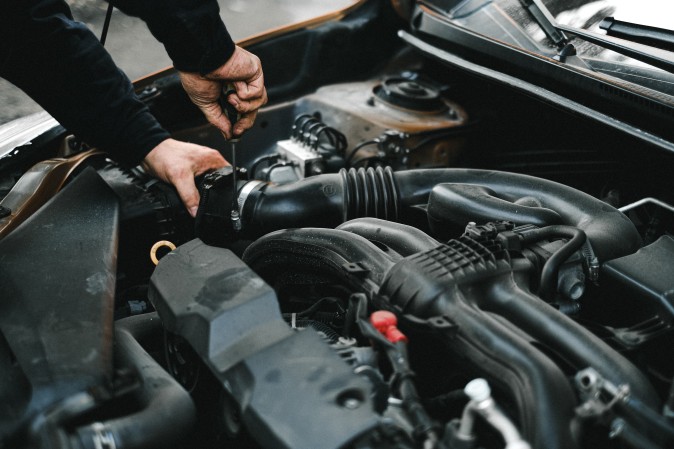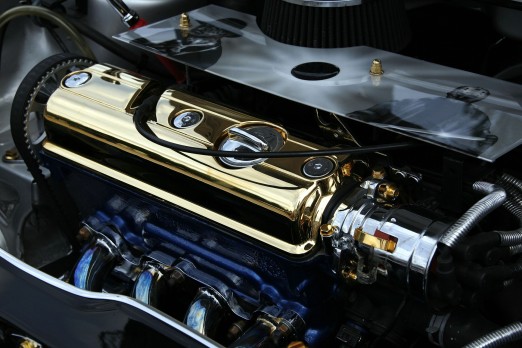A silent guardian alerting you to the engine’s health, the oil light on a BMW is an essential sentinel. When this light flickers on, drivers could feel a wave of anxiety as they contemplate what likely problems could be compromising the functionality of their car. The situation takes on further intrigue, though, as the light alternates between being on and off. The significance of the BMW oil light is examined in this article, along with potential reasons why it glows and the relief it provides when it extinguishes. For owners of BMWs to guarantee the longevity and best performance of their valuable vehicles, they must comprehend these dynamics.
Importance of the oil light in BMW:
An important sign of the condition of the engine and lubrication system in a BMW is the oil light. It is significant in several important ways:
Early Warning System: The purpose of the oil light is to warn drivers of foreseeable problems with the engine’s oil pressure or levels before significant harm is done. This early notification can save expensive repairs and long-term damage.
Engine Lubrication: The moving components of the engine must be properly lubricated, which requires adequate oil pressure and levels. Increased wear and tear, overheating, and friction can all result from inadequate lubrication.

Preventing Engine Damage: Poor lubrication brought on by low oil pressure or levels can accelerate the wear and tear of parts including camshafts, pistons, and bearings. The oil light prevents this kind of harm by signaling when action needs to be taken.
Oil Pressure Monitoring: Additionally, oil pressure is tracked via the oil light. A leak, an oil pump that is not working properly, or other problems that could impair engine performance could be indicated by low oil pressure. Engine efficiency depends on maintaining the ideal oil pressure.
Avoiding Engine Seizure: Extended disregard for the oil light could potentially result in an engine seizure. This happens when there is too much heat and friction on vital parts, locking up the engine. Such catastrophic failures can be avoided by promptly addressing oil-related issues.
Understanding the BMW Oil Light:
An essential indicator for keeping track of the engine’s oil pressure and levels is the BMW oil light. Below is an outline of its main purposes and importance:
Purpose of the Oil Light:
The main objective is to notify drivers of problems with the lubricating system of the engine. It alerts you when oil pressure or levels drop, both of which are essential for healthy engine operation.
Significance for Engine Health:
Sufficient oil levels are necessary to lubricate the engine’s moving parts, lower friction, and stop wear and tear.
By ensuring that oil is adequately circulated throughout the engine, maintaining ideal oil pressure helps to avoid overheating and maintain component integrity.
Indications of Low Oil Level:
When the engine’s oil level drops below a safe threshold, the oil light usually turns on.
Low oil levels may result in inadequate lubrication, which could seriously harm engine parts.
Indications of Low Oil Pressure:
In the event of a decline in oil pressure, which could indicate problems with the oil pump, leaks, or other elements influencing oil circulation, the oil light may also come on.
Low oil pressure increases the danger of damaging important engine components by causing insufficient lubrication.

Actionable Warning:
The oil light indicates that something must be investigated and attended to right away.
Ignoring the oil light could lead to increased friction, serious engine damage, and decreased performance.
Diagnostic Tool:
The oil light serves as a diagnostic tool by warning drivers of any issues before they become serious.
The oil light can indicate problems that should be promptly fixed to avoid more involved and expensive repairs.
Possible Causes for Oil Light On:
There are a few possible reasons to consider when the oil light on a BMW illuminates:
Low Oil Level:
Low oil level is the most frequent cause of the oil light to glow. It suggests that the engine might not have enough oil to lubricate its parts effectively.
Oil Pressure Issues:
The oil light may come on due to low oil pressure. This could be the result of problems with the engine’s oil passageways, a blocked oil filter, or a broken oil pump.
Faulty Oil Pressure Sensor:
When an oil pressure sensor malfunctions, it might mistakenly communicate low oil pressure, illuminating the oil light even when the real oil pressure is within the permissible range.
Oil Leaks:
Oil levels might drop, and the oil light may come on because of leaks in the oil system, such as those from the oil pan, gasket, or oil cooler.
Worn Engine Bearings:
Worn engine bearings can cause higher clearances and a decrease in oil pressure, which can activate the oil light.
Incorrect Oil Viscosity:
Oil flow and pressure can be impacted by using the incorrect viscosity of oil for a given BMW model, which could result in the oil light turning on.
Oil Pump Malfunction:
Reduced oil pressure and the oil light turning on are outcomes of an oil pump malfunctioning, which prevents oil from being sufficiently circulated through the engine.
Clogged Oil Filter:
Reduced oil pressure and an illuminated oil light can result from an obstruction in the oil flow caused by a blocked oil filter.
Impact on Engine Performance:
A BMW’s oil light being on has a substantial effect on engine performance and can cause several problems, including:
Reduced Lubrication:
Lubricating moving parts is engine oil’s main purpose. An improper lubricant may be present, creating friction between parts and hastening wear and tear when the oil lamp is illuminated.
Increased Friction and Heat:
When engine components are not properly lubricated, friction increases, and heat production rises. This may cause overheating and jeopardize the reliability of important engine parts.
Accelerated Wear on Engine Parts:
Components like bearings, pistons, and camshafts may experience accelerated wear during extended operation with low oil levels or pressure. Reduced engine performance and efficiency may result from this wear.
Potential Engine Damage:
Elevated friction and inadequate lubrication present a significant danger of engine damage. If the oil light is left on, the engine could seize, and other catastrophic problems could occur.
Decreased Fuel Efficiency:
An engine running under strain from inadequate lubrication is going to use more fuel than an engine running in perfect condition. This may result in higher operating expenses and less fuel economy.

Steps to Address Oil Light Issues:
To fix an oil light problem on a BMW, take these crucial actions.
Pull Over Safely:
Locate a secure location to pull over as soon as the oil light illuminates. Driving with the oil light on could seriously harm the engine.
Check Oil Level:
Lift the hood and use the dipstick to check the engine oil level. If it is low, add the right kind and volume of oil by the manufacturer’s instructions.
Inspect for Oil Leaks:
Check for any evidence of oil leaks under the car and in the engine. Preventing leaks early on is essential to keeping oil pressure and levels at optimal levels.
Verify Oil Viscosity:
Make sure the oil has the appropriate viscosity before using it. Engine performance is guaranteed when the oil recommended by the manufacturer is used.
Check Oil Filter:
Oil flow might be hampered by an unclean or blocked oil filter. If replacement is warranted, replace it by the suggested service intervals.
Inspect Oil Pressure:
Check the oil pressure if you have an oil pressure gauge available. Low oil pressure could be a sign of problems with the oil pump or other parts that need to be fixed by a professional.
Reset the Oil Light:
After resolving the issue, the oil light on some BMW models might need to be reset. To reset the service indicator or oil change indicator, consult the owner’s handbook.
Address Engine Component Wear:
If extended low oil pressure or levels caused the oil lamp to illuminate, think about having a repair check engine part for wear and tear. More harm can be avoided if these problems are dealt with right away.
Maintenance Tips:
Take into consideration these maintenance suggestions to keep your BMW operating at peak efficiency and avoid problems linked to oil:
Regular Oil Changes:
Follow the recommended oil replacement intervals provided by the manufacturer. To ensure optimal engine lubrication and efficiency, fresh, clean oil is required.
Use the Correct Oil:
Make sure you always use the recommended viscosity and kind of oil as stated in the owner’s handbook. The best engine protection is ensured by using the appropriate oil.
Monitor Oil Levels:
Use the dipstick to frequently check the engine oil level. To avoid low oil pressure and potential engine damage, keep the oil at the required level.
Inspect for Oil Leaks:
Check for oil leaks under the car and in the engine regularly. To stop the oil from dropping, quickly fix any leaks.
Replace Oil Filter:
Observe the suggested replacement intervals for oil filters. Proper oil flow is ensured, and pollutants are kept out of the engine by having a clean oil filter.
Check for Engine Component Wear:
Check important engine parts for wear regularly, especially if there have been instances of low oil pressure or levels. Replace worn parts as soon as possible to stop more harm.
Maintain a Cool Engine:
Oil quality can be lowered by overheating. Make that the coolant levels are kept within the advised range and the cooling system is operating as it should.
Monitor Oil Pressure:
Check the oil pressure gauge on your BMW regularly if one is provided. Unexpected decreases in oil pressure could be a sign of deeper problems that require care.
Address Warning Lights Promptly:
If any warning lights, including the oil light, come on, take quick action. Serious engine damage may result from disobeying warnings.
Professional Inspections:
Plan for routine expert checkups, particularly if you experience warning light issues or observe changes in the performance of your engine. Expert mechanics can see such problems early on.
Store Important Information:
Keep a log of all maintenance, repairs, and oil changes. This data is useful for monitoring the condition of your car and can help mechanics identify problems.
Frequently asked questions:
Why does my BMW’s oil light flash on and off?
A malfunctioning sensor, low oil level, or pressure issues could be the cause of a flashing BMW oil light; prompt inspection is recommended.
Can I use my BMW even when the oil light is on?
It is not advisable to drive a BMW with the oil light on because this could seriously damage the engine; take care of the problem right away.
How is the oil level sensor on a BMW checked?
Use the onboard computer to check the oil level sensor on a BMW, or visually inspect the sensor and wiring to look for any problems.
How can I tell when the oil in my BMW is low?
To detect low oil, check the oil level in your BMW using the onboard computer or a dipstick if it is lower than the recommended range.
Conclusion:
In summary, the BMW oil light is an essential engine health monitor that indicates potential problems that could compromise performance and necessitate expensive repairs if left unchecked. It is critical to comprehend the causes of the oil light activation and to take fast action to remedy them through routine maintenance, oil changes, and expert inspections. Ignoring the oil light increases the risk of engine seizure, reduced performance, and faster engine wear. BMW owners can reduce long-term maintenance expenses, ensure a smoother driving experience, and extend the life of their engines by putting proactive care first and paying attention to the oil light’s warnings.

